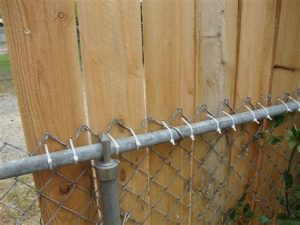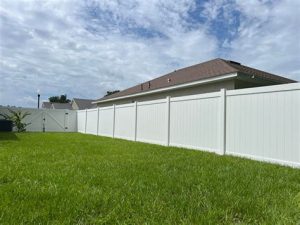Learn how to navigate local regulations, apply for fence permits, and ensure property boundaries are respected to avoid fines and legal issues.When it comes to enhancing the aesthetics and security of your property, installing a fence can be a rewarding project. However, before you pick out the latest design, it’s essential to understand the importance of fence permits. Navigating local regulations can be complex, but obtaining the necessary permits is crucial for ensuring compliance and protecting your investment. From the application process to understanding how to respect property boundaries, each step plays a vital role in the successful execution of your fencing project. In this blog post, we will explore the intricacies of fence permits—addressing why they matter, how to apply for them, and what you can do to avoid costly fines or legal challenges. Join us as we delve into these essential aspects to ensure your fencing endeavors stand on solid ground.
Understanding local regulations
When considering the installation of a fence on your property, it’s crucial to first understand the local regulations that govern such constructions. Local governments often have specific rules and guidelines that dictate the types of fences you can erect, their heights, and their proximity to property lines. Ignoring these regulations can lead to fines and necessitate costly modifications.
Each municipality may have different zoning laws that must be adhered to, which can include restrictions based on the neighborhood’s aesthetic or functional attributes. For example, some areas may prohibit certain fencing materials, while others might restrict the height of fences in front yards to ensure aesthetic uniformity. Therefore, it’s essential to check with your local zoning office or municipal planning department before beginning your project.
Additionally, understanding homeowner association (HOA) rules can be just as important as local regulations. HOAs often have their own set of rules regarding fencing, and failure to comply can result in fines or enforcement actions. Therefore, reviewing both municipal regulations and HOA guidelines is vital to ensure your fence project goes smoothly.
Applying for the necessary permits
When planning to install a fence around your property, understanding the importance of applying for the necessary permits is crucial. Many local municipalities enforce strict zoning laws that dictate what type of fencing you can use, how tall it can be, and its exact placement on your property. Failing to obtain the appropriate permits can lead to significant legal complications and hefty fines.
To start the process of acquiring a permit, you should first check with your local government office or their website. Many municipalities have detailed documentation online that describes the necessary steps, fees, and forms required to apply for a fence permit.
- Type of fence materials being used
- Height of the fence
- Exact location on your property
- Purpose of the fence
Once you’ve gathered all the required information and filled out the necessary forms, you can submit your application to the relevant authority. They will review your request to ensure it meets local regulations before issuing the permit. It’s essential to wait for the approval before commencing the construction, as building without a permit can result in the need to remove or alter the fence.
Fence permit approval process
Applying for a fence permit is not just a suggestion; it’s often a requirement enforced by local governments to ensure that property lines and community standards are respected. The process can vary widely depending on the location and the complexity of the fence project. Here’s a step-by-step guide to help you navigate the fence permit approval process successfully.
1. Research Local Regulations: Begin by checking your local zoning regulations. Many municipalities have specific rules regarding fence heights, materials, and placement. Regulations may differ based on residential or commercial properties, so understanding your local code is crucial.
2. Prepare Necessary Documentation: Once you have a clear understanding of the regulations, gather the necessary documents. You may need to provide a site plan of your property, including accurate measurements of the proposed fence location. Additionally, some areas might require proof of property lines, so having a survey can be beneficial.
3. Submit Your Application: With your documentation ready, it’s time to submit your permit application. This typically involves filling out a form with details about the project and paying a fee. Be prepared for potential waiting times while your application is processed. In some cases, local governments may require a public notification process, giving neighbors a chance to voice any concerns.
4. Await Approval: After submitting, your application will be reviewed by the appropriate local authorities. They may reach out for more information or clarification, so stay responsive. Approval times can vary; therefore, it’s wise to plan your project timeline accordingly.
5. Install Your Fence Legally: After receiving your permit, you can proceed with the installation of your fence. However, make sure to adhere to the approved plans. Any deviations could lead to fines or even the requirement to dismantle the fence.
Understanding the fence permit approval process can save you time and money in the long run. Following the proper steps will ensure you create a beautiful and legal boundary that enhances your property while respecting local laws.
Ensuring property boundaries are respected
When it comes to installing a fence, a key factor to consider is ensuring that property boundaries are respected. This not only helps maintain good neighborly relations but also protects you from potential legal disputes down the line. Understanding where one owner’s property ends and another’s begins is crucial before you start any fencing project.
One of the best ways to ensure you’re on the right side of the boundary line is to conduct a property survey. Hiring a licensed surveyor can provide you with an accurate depiction of your land’s boundaries. This will help you avoid encroaching on your neighbor’s property, which could lead to costly legal ramifications and the potential removal of your newly installed fence.
Additionally, it’s essential to check with local regulations and zoning laws regarding fences. Some communities have specific rules about how close to the boundary a fence can be installed, as well as its height and materials. Complying with these regulations not only helps ensure that property boundaries are respected but also protects you from future fines and complications.
Avoiding fines and legal issues
One of the primary reasons homeowners and property owners should be aware of fence permits is to avoid unnecessary fines and legal complications. Installing a fence without the proper permissions can lead to significant repercussions, which can include hefty fines and, in extreme cases, legal action from neighbors or local authorities.
To effectively prevent these issues, it is crucial to understand the local regulations that apply to fence installations in your area. Each municipality may have specific rules regarding fence height, materials, and placement. Familiarizing yourself with these regulations will not only save you from potential legal battles but also ensure that your investment enhances your property value without attracting unnecessary scrutiny.
Another important aspect is obtaining the necessary permits before commencing any work. The process may seem tedious, but securing the right permits allows you to have your plans reviewed by professionals, ensuring that your fence complies with all required standards. Furthermore, by doing so, you can build a positive rapport with local authorities, which can be beneficial in resolving any future disputes that may arise related to property boundaries or local laws.
Frequently Asked Questions
What is a fence permit?
A fence permit is an official approval from local government authorities that allows property owners to construct a fence on their property, ensuring it complies with local zoning laws and regulations.
Why are fence permits important?
Fence permits are important as they help maintain community standards, ensure safety, and prevent disputes between neighbors regarding property lines and aesthetics.
What can happen if I build a fence without a permit?
Building a fence without a permit can lead to fines, orders to remove the fence, and possible legal disputes with neighbors if the fence is deemed to violate regulations.
How do I apply for a fence permit?
To apply for a fence permit, you typically need to submit an application form along with detailed plans of the proposed fence design and its location, and sometimes pay a fee to the local zoning office.
Are there different regulations for different types of fences?
Yes, there are usually different regulations based on the type of fence (e.g., wood, chain-link, vinyl) and its intended use (e.g., security, decorative), which may affect height, materials, and location.
What factors should I consider before constructing a fence?
Before constructing a fence, consider local zoning codes, property lines, the desired fence height and materials, neighborhood aesthetics, and potential impact on surrounding properties.
Can a fence permit be denied?
Yes, a fence permit can be denied if it does not comply with local zoning laws, if it obstructs sight lines for traffic, or if it violates neighborhood regulations.





